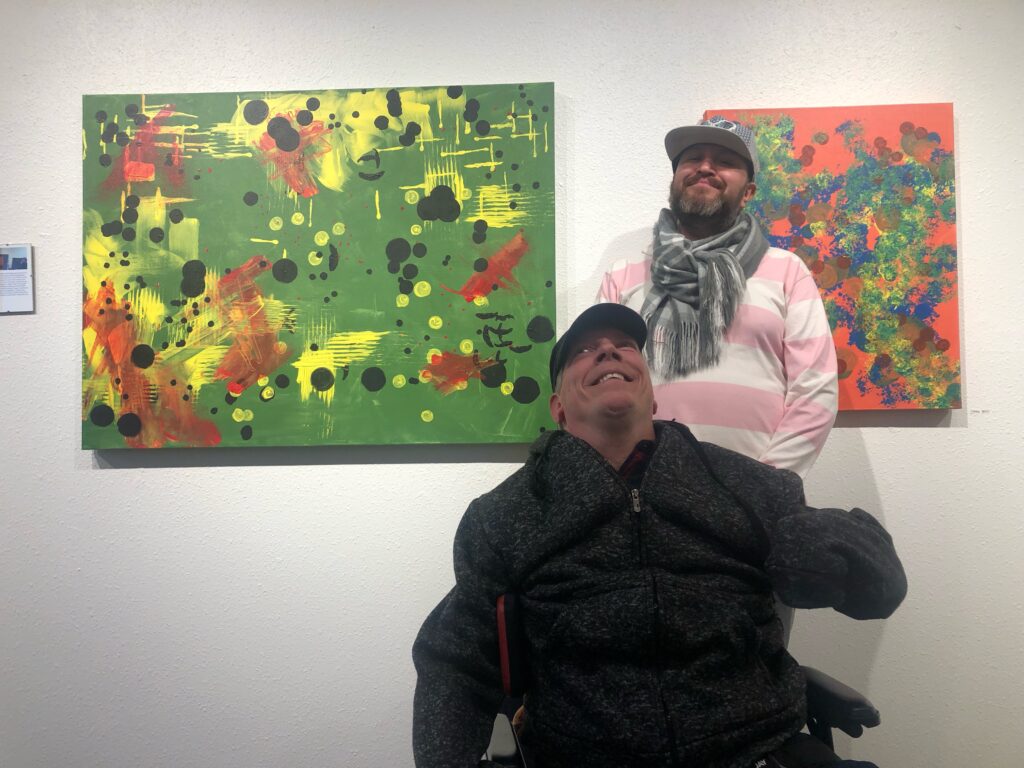
Stevie and Corey, both accomplished artists, don’t use conventional methods to make their art. They can’t.
But what the two artists and others like them who are living with disabilities can do is use the technique Artistic Realization Technologies (A.R.T.) to realize their artistic vision. Pieces created with the process have recently been sold as part of Access Gallery’s corporate commission for Modivcare, a Denver Tech Center-based company that provides non-emergency medical transportation, remote patient monitoring, meal delivery and personal and home care. For nearly 50 years, Access Gallery has been a creative home for individuals living with disabilities, many of whom sell their work through the gallery’s gift shop or through corporate and non-profit commissions secured through the gallery.
The A.R.T. process uses conventional and unconventional artistic tools as well as specific processes to support artists who often do not have full use of their hands as well as many who are only semi verbal or not able to verbalize at all. Each artist works with a tracker, an abled supporter who works to specifically express what is in the artist’s head. Using creative processes that include laser pointers, color palettes, yard sticks and other simple devices, the tracker works to specifically render each artist’s direction.
“The A.R.T process is set up so that the artist can completely translate their vision. The tracker keeps their influence out of the artwork,” said Louis Trujillo, Access Gallery Manager who is also a trained tracker for the process. “It gives them a voice in a world where they really don’t get a voice a lot of the time. It allows them to make decisions in a world where they aren’t always given the opportunity to make their own decisions.”
The A.R.T. program, which has been around for 25 years, is available across the country. Access Gallery was able to launch the program in Denver through an Arts in Society Grant it received through Redline Contemporary Arts Center, a Denver-based center that focuses on education and engagement between artists and communities to create positive social change.
Trujillo said that one of the most important aspects of the experience of the four artists who have used A.R.T. to create is their full engagement in the creative process. Where they may have felt disconnected in other activities this process hands back to them full creative control and draws them into the act of creating in a more complete way.
“They are able to express joy, anger, fear, and love fully through the work,” Trujillo said. “For our artists, it includes the therapy that is inherent in all art making.”
